We are trying to buy and test Chinese GPS trackers for dogs (and not only)
Hi, Geektimes! Since we in Mishiko do the activity tracker and GPS for dogs, we, of course, are interested in what is already on the market. Including what can be ordered in Russia. We were asked in the comments on Geektimes to test other GPS trackers (trackers and GPS, and we didn’t find any activity at all), and see how they work. Okay, we decided, and started the tests. For this, we ordered four GPS trackers at once, namely:
At each site, we used the "quick order" - indicated the mobile number, and waited for a call.

Order X-Pet 1 did not work at all: after placing the order, so no one called us back.
')
Shops with iPet and MonkeyG Deest called back almost immediately and offered to arrange delivery the next day.
On the site, where it was possible to buy TK Star, we were called back and informed that the model we chose “came all defective” and offered to choose something else or wait for a new delivery.
So there are only two of the four candidates left. We will test them. Go!
After the trackers arrived, we hurried to unpack them. So, meet: iPet Mini.
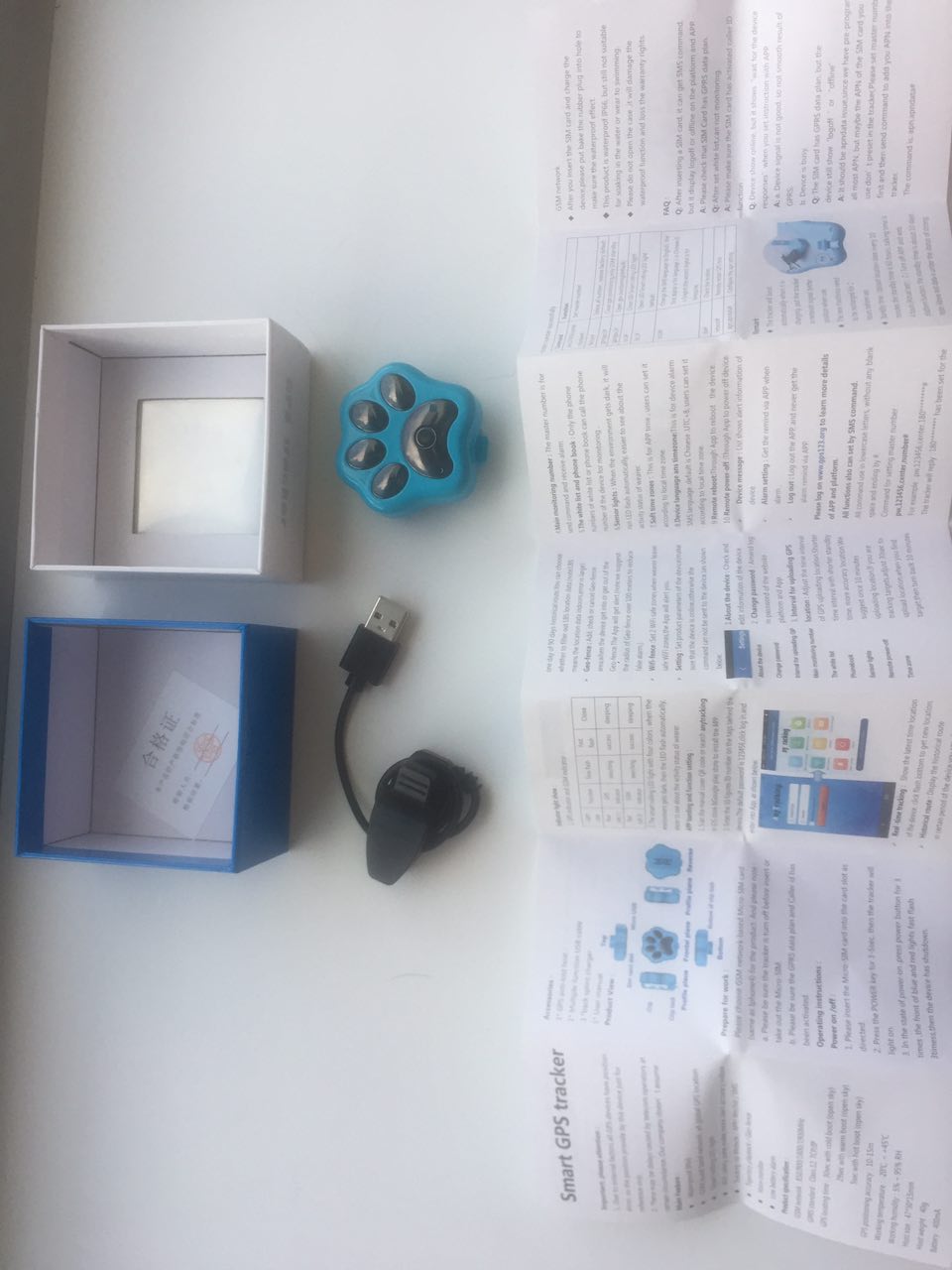
As you can see, the device itself is included in the kit, a clothes-pin and charging instructions in English and Chinese (no Russian).
Open MonkeyG Deest:
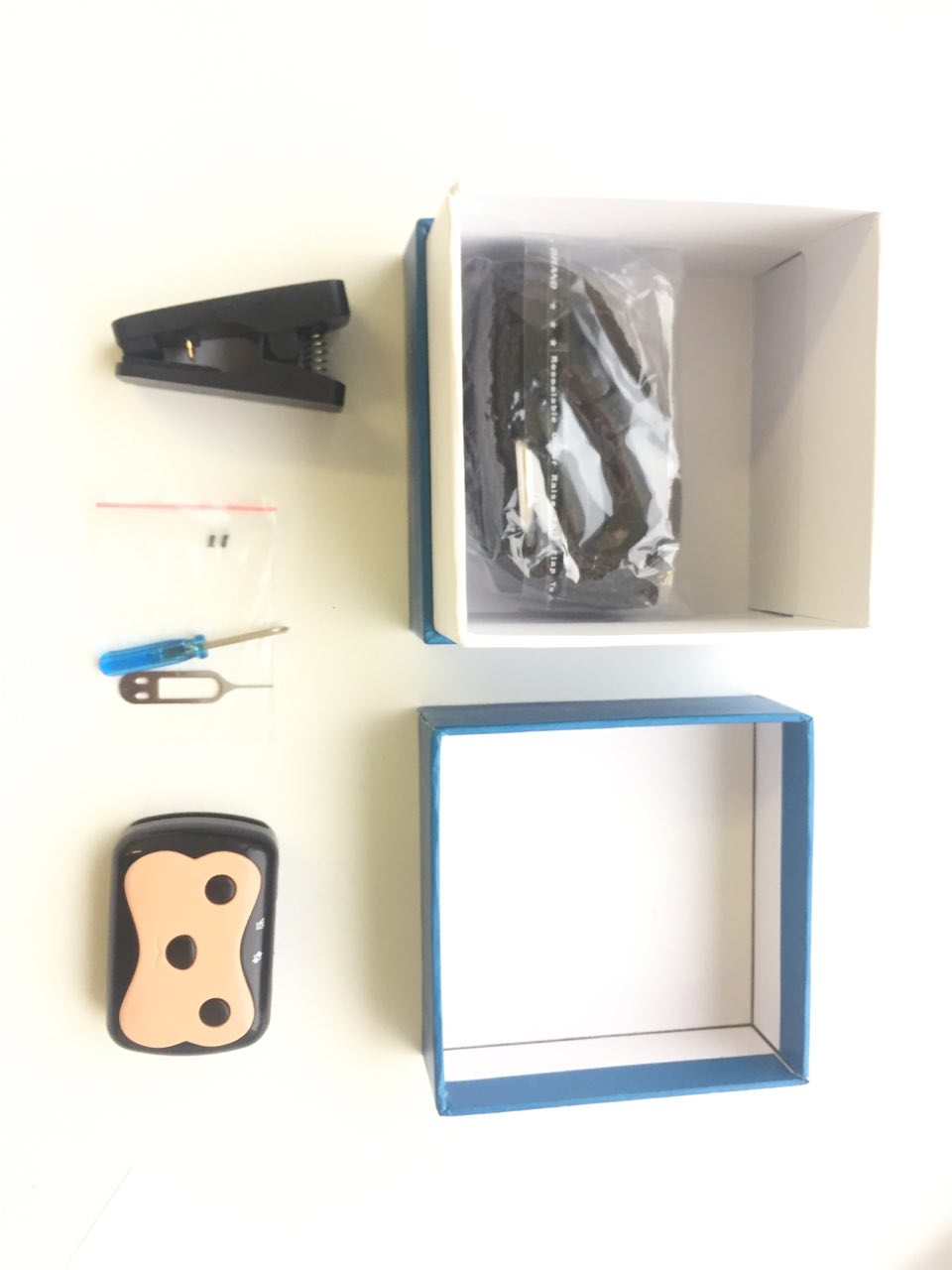
It looks somewhat simpler. Some kind of screwdrivers, screws in the bag (needed to unscrew the groove for the sim card), a clothespin, charging and tweezers for the SIM card. A nice bonus - the collar comes with it. There is no instruction in the photo (alas, we lost it while everything was unpacked and fotkali). Unfortunately, the loss of instructions we still bugs. About this we will tell a little later.
If we talk about Mishiko, here's what the user will find when buying a tracker:


The tracker itself, the collar, wireless charging, two instructions: brief and complete (on the first drawn dachshund) and an adapter for third-party collars.
Go to the launch and GPS tests.
For charging and iPet, and MonkeyG Deest, such pegs are used for charging:
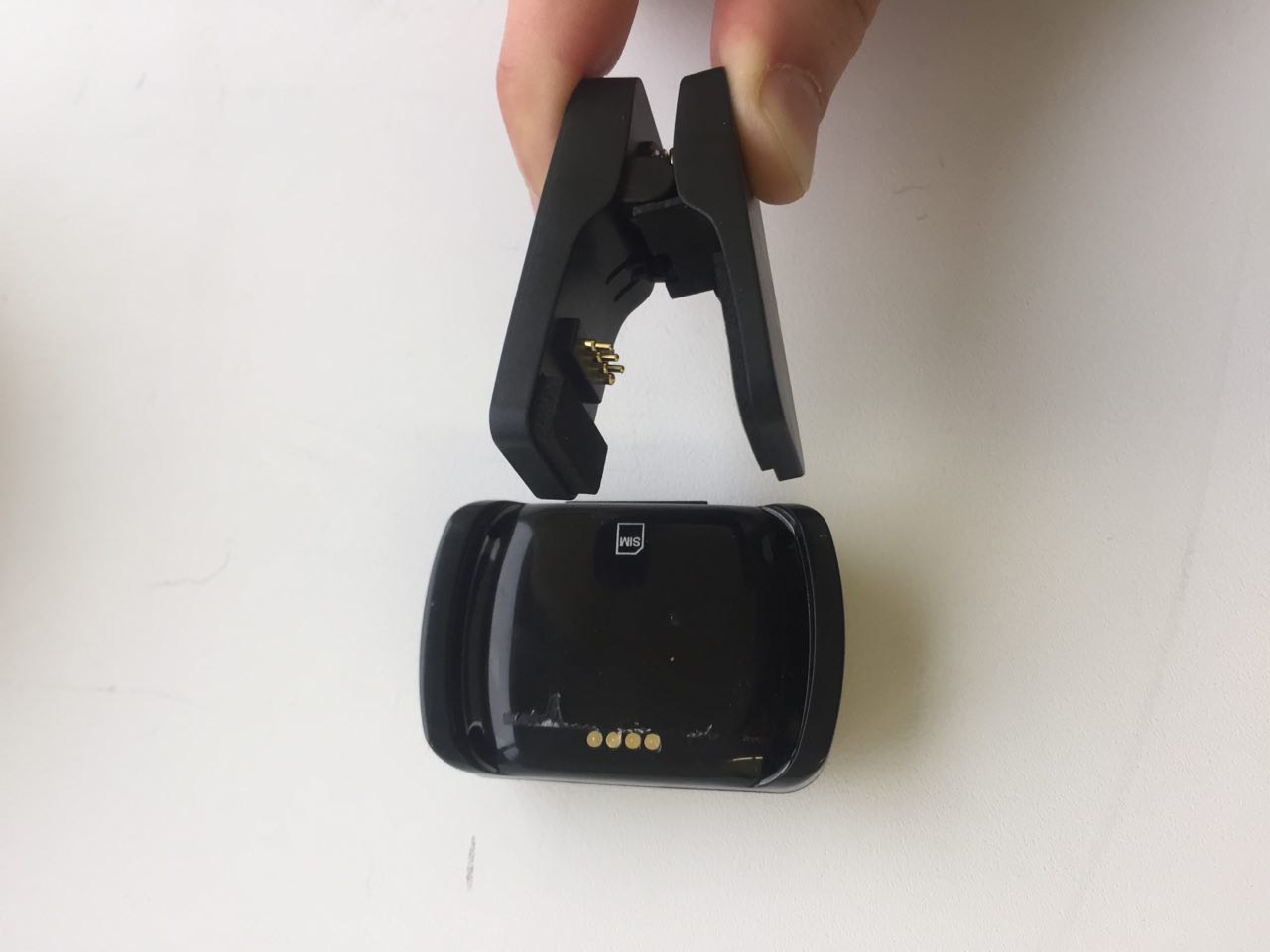
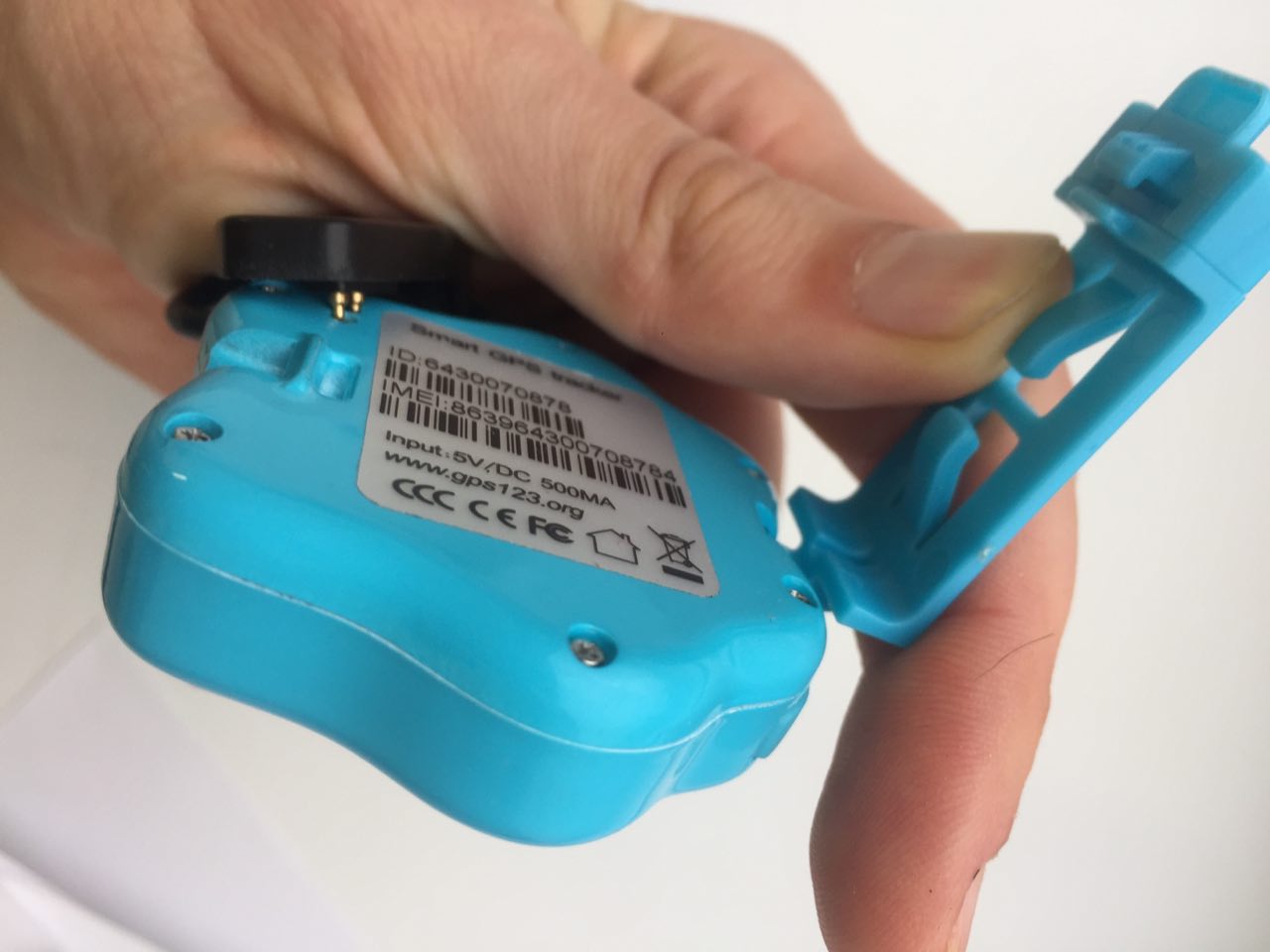
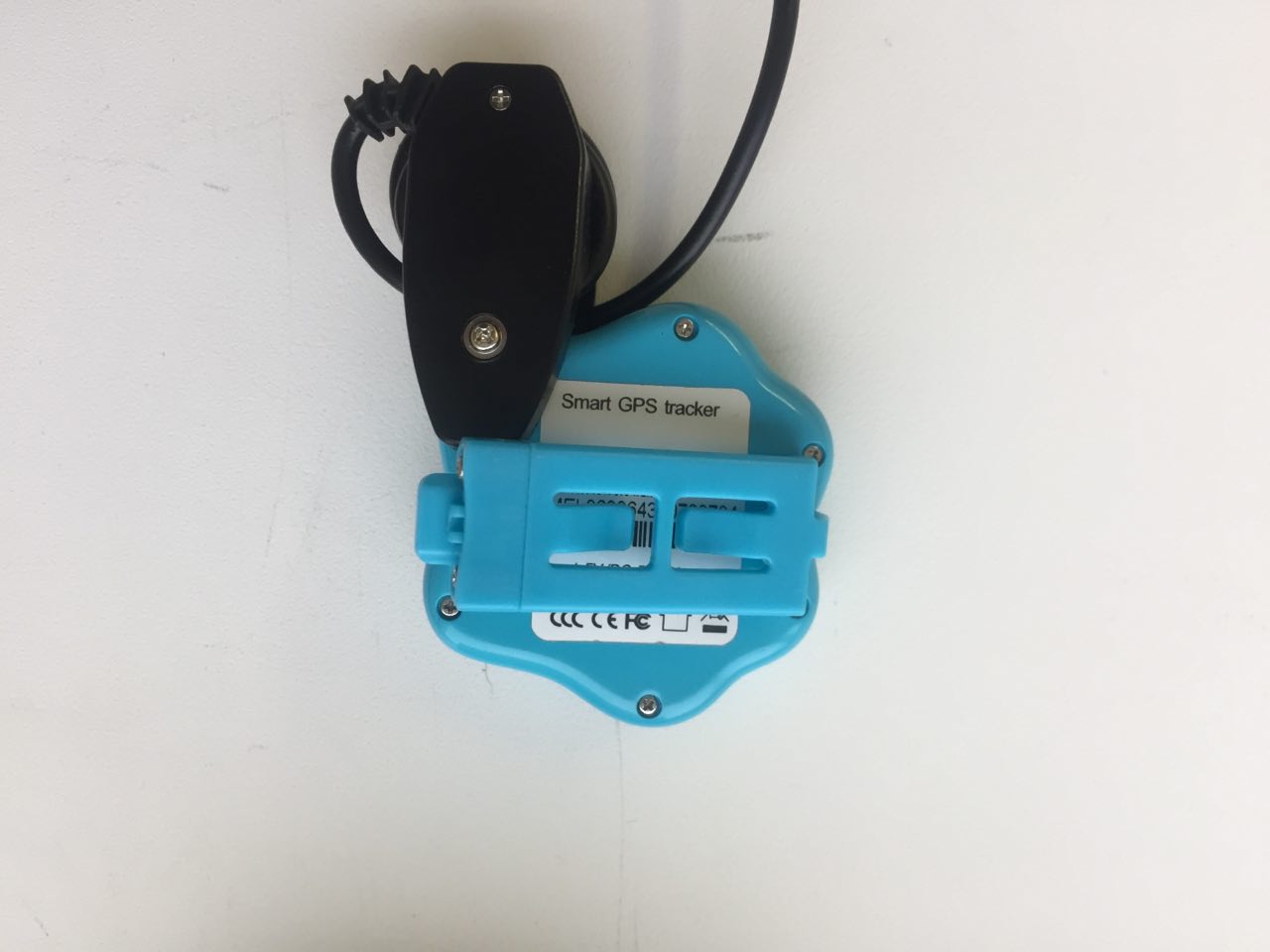
One of the four "teeth" in such a charge at MonkeyG immediately "stuck", but charging continued in this mode. When the clothespin is closed, the tracker still dangles in the groove, and it is easy to miss if it jumps off. It was necessary to check several times whether the clothespin was exactly on the right place, and whether the charging was going on.
We are here, of course, can not resist boasting their own exercises. After the walk, you can put Mishiko on it without even removing the device from the collar. Walked, removed Mishiko from the dog, and put on gymnastics:
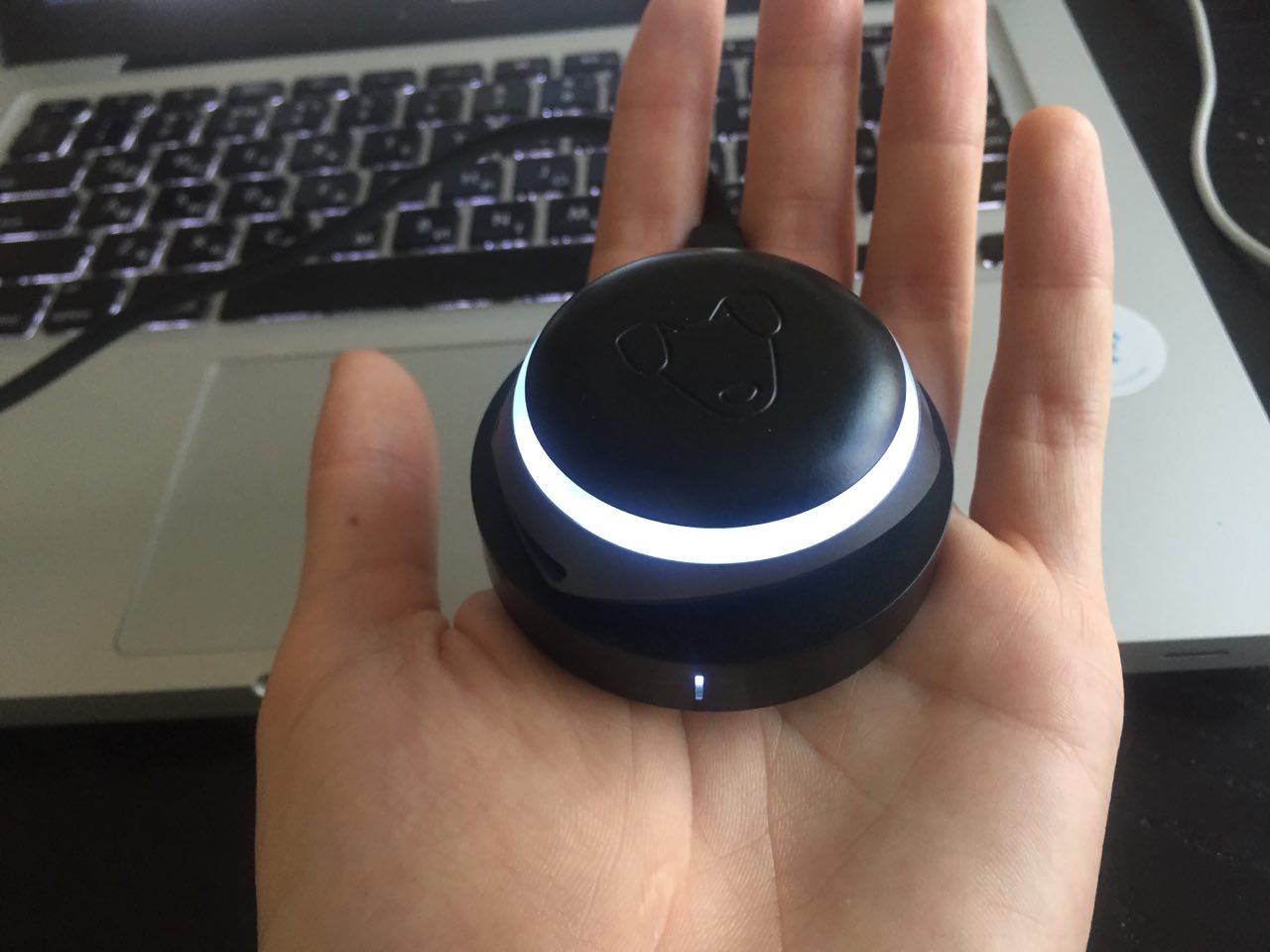
The first and most important thing in any GPS tracker is how it transmits data. Some devices use bluetooth, but in this case they can either create a p2p network (then you need to have a huge number of connected devices that would help find the location), or in principle are limited to a radius of several tens of meters. This scheme makes the presence of GPS is simply meaningless.
"Workers" GPS trackers use a cellular network to transmit, and here you need a SIM card. Mishiko uses a built-in SIM-chip, which works out of the box on a contract with T-Mobile (in Russia, MTS has become a roaming partner). In other cases, you will have to buy and activate the SIM, paying monthly payments to the operator. In the Mishiko tariff for 11900 rubles, it is not necessary to pay for cellular data in principle. That is, no ruble, and never.
In the case of the usual sim card and other trackers, you will have to pay at least 300-400 rubles per month, or at least 3-4 thousand per year. Plus, individual contracts of cellular operators and even operators in general, like Tele2 in Moscow (due to the lack of a 2G network), are not supported.
There are also pitfalls here: a sim card bought in the salon can voluntarily subscribe to some SMS horoscopes, and burn an extra 5-10 rubles every day. In the case of the SIM chip, this scenario is excluded.
So, enough lyrical digression, try to insert SIM cards in our trackers and test GPS.
First in line - MonkeyG Deest. The SIM card slot is hidden behind two small screws. To open the slot, you have to use the screwdriver that comes in the kit:
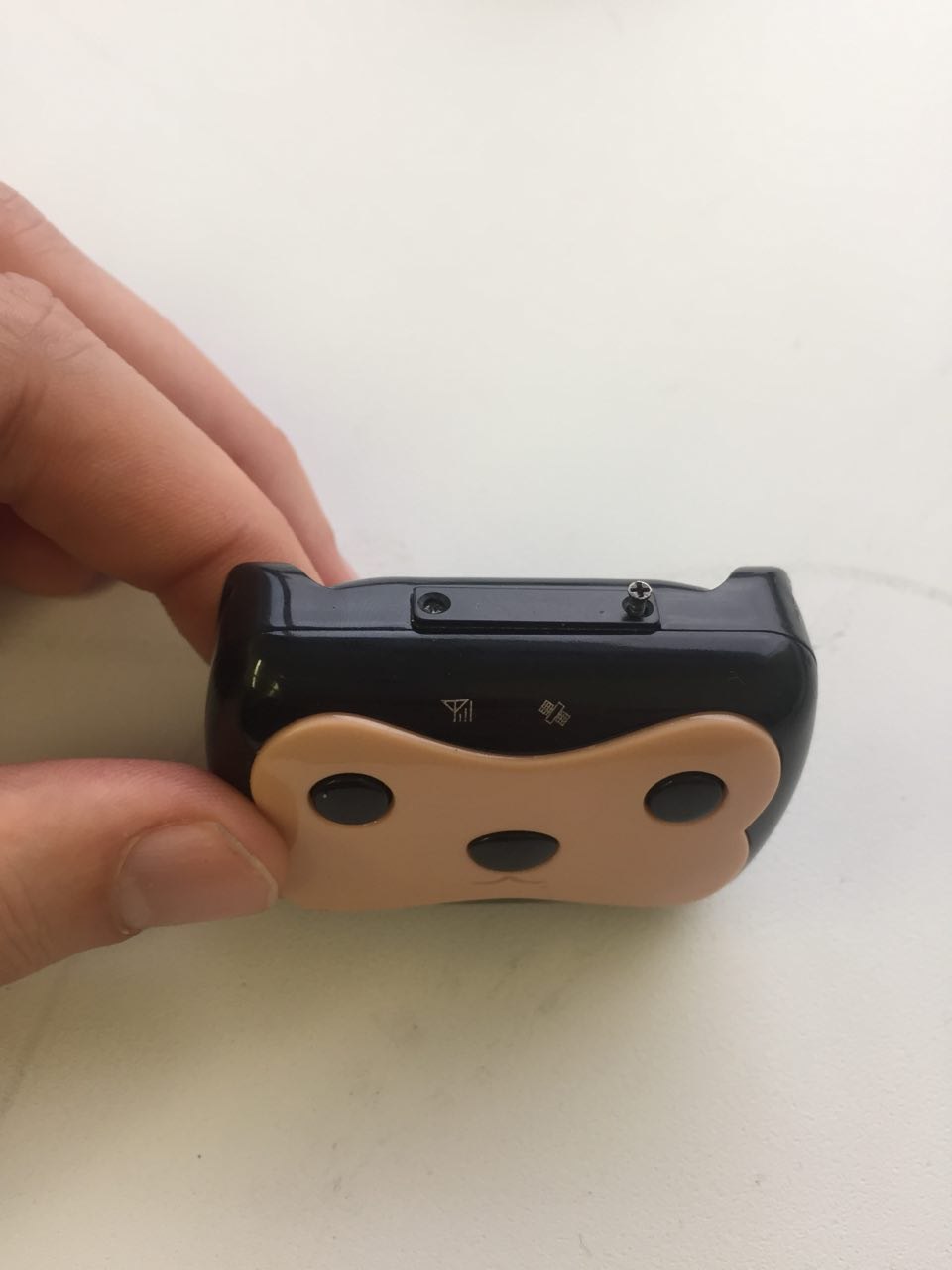
We decided to use the usual YOTA SIM card from iPhone 6, but it turned out that the device does not support nano-SIM, but only works with Micro SIM (as in iPhone 4).
We buy an adapter:
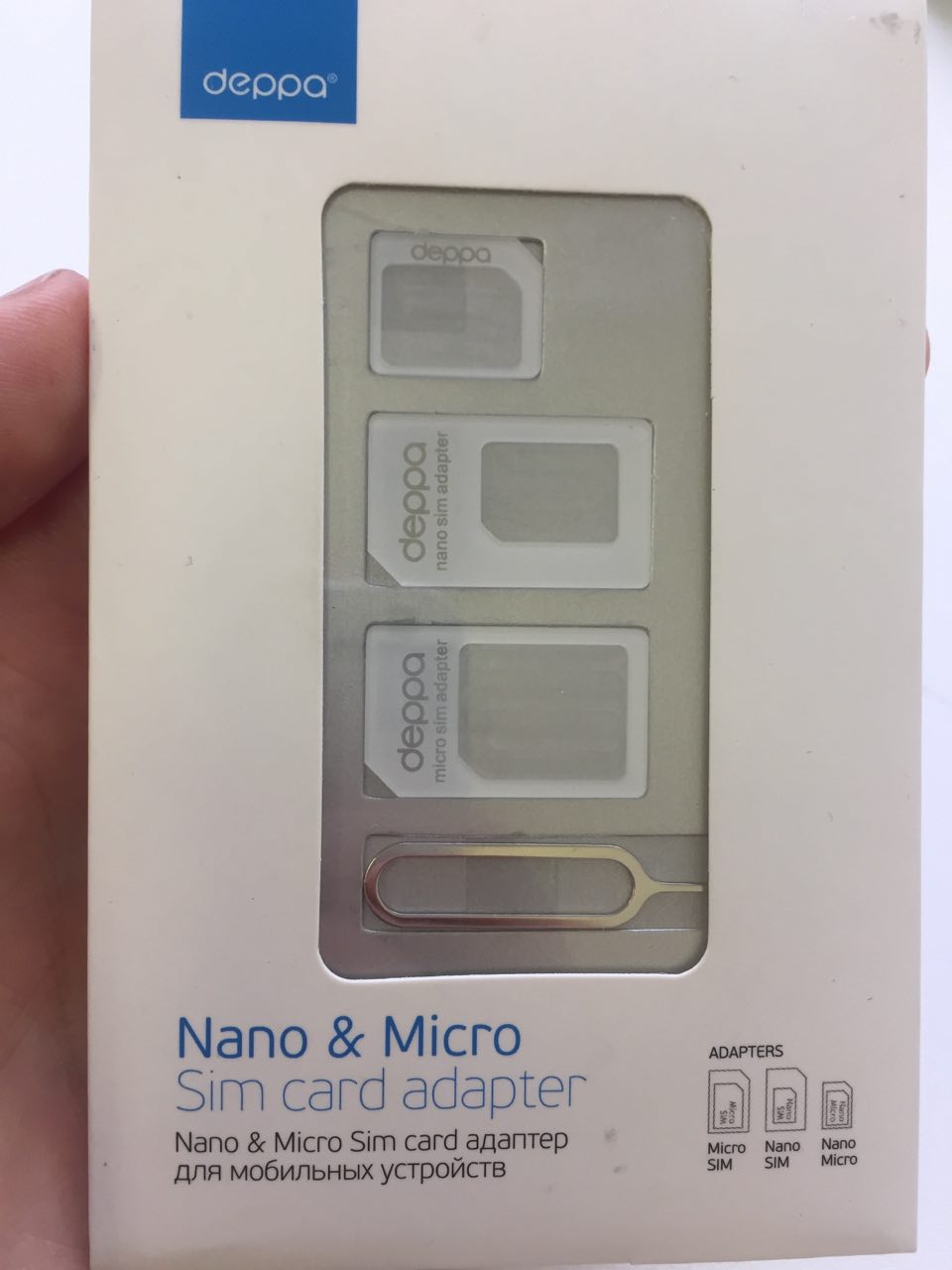
We insert our sim card into the adapter, we try to immerse it in the MonkeyG Deest slot ... And Simka is stuck. Due to the features of the adapter (and / or the tracker design), the SIM card “zazhevalo” in the slot and pull it out so simply will not work:
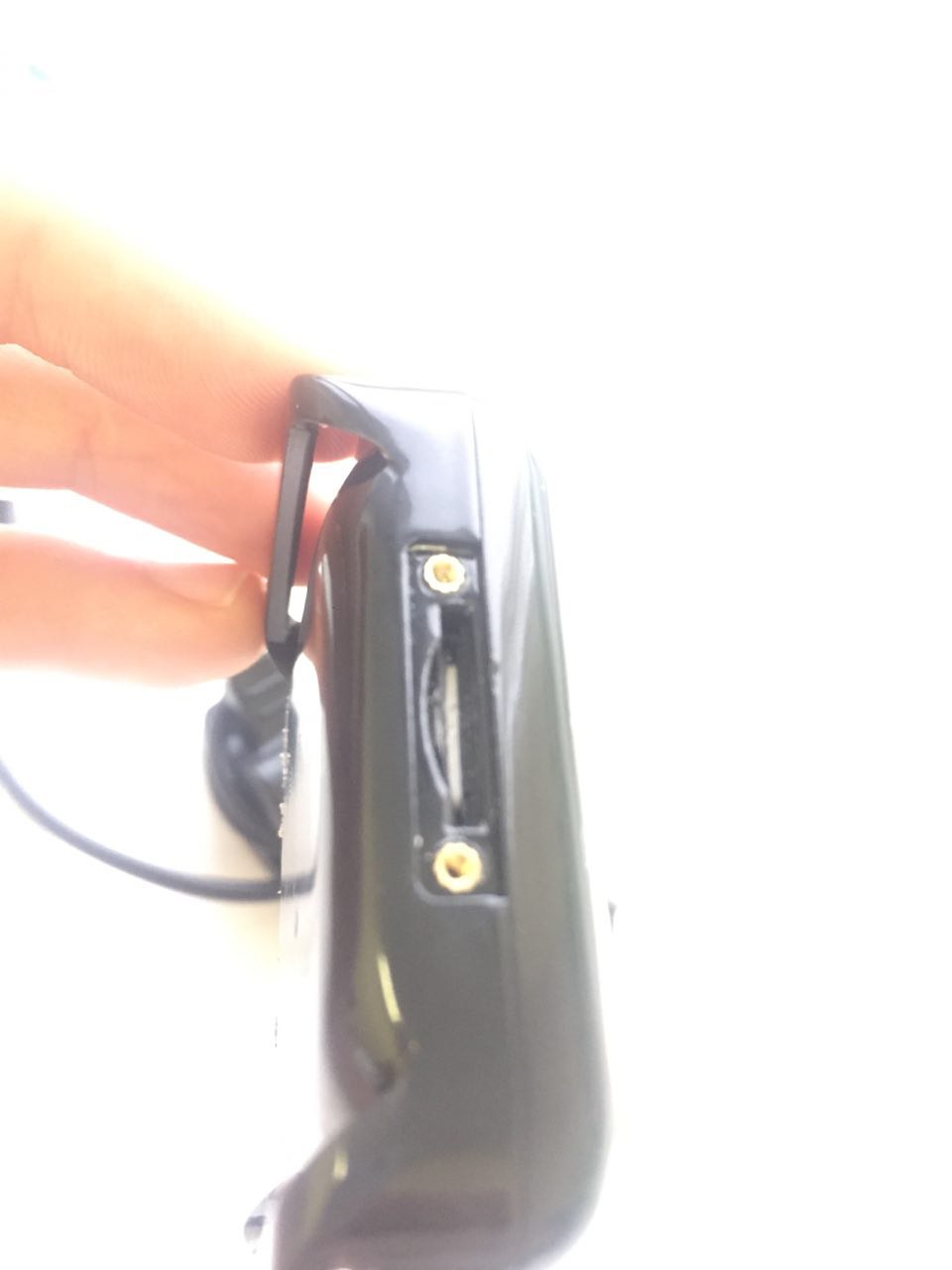
Five minutes of picking with a screwdriver and tweezers, and Simka, together with the adapter, surrendered. The adapter broke completely, and Simka got off with light scratches:
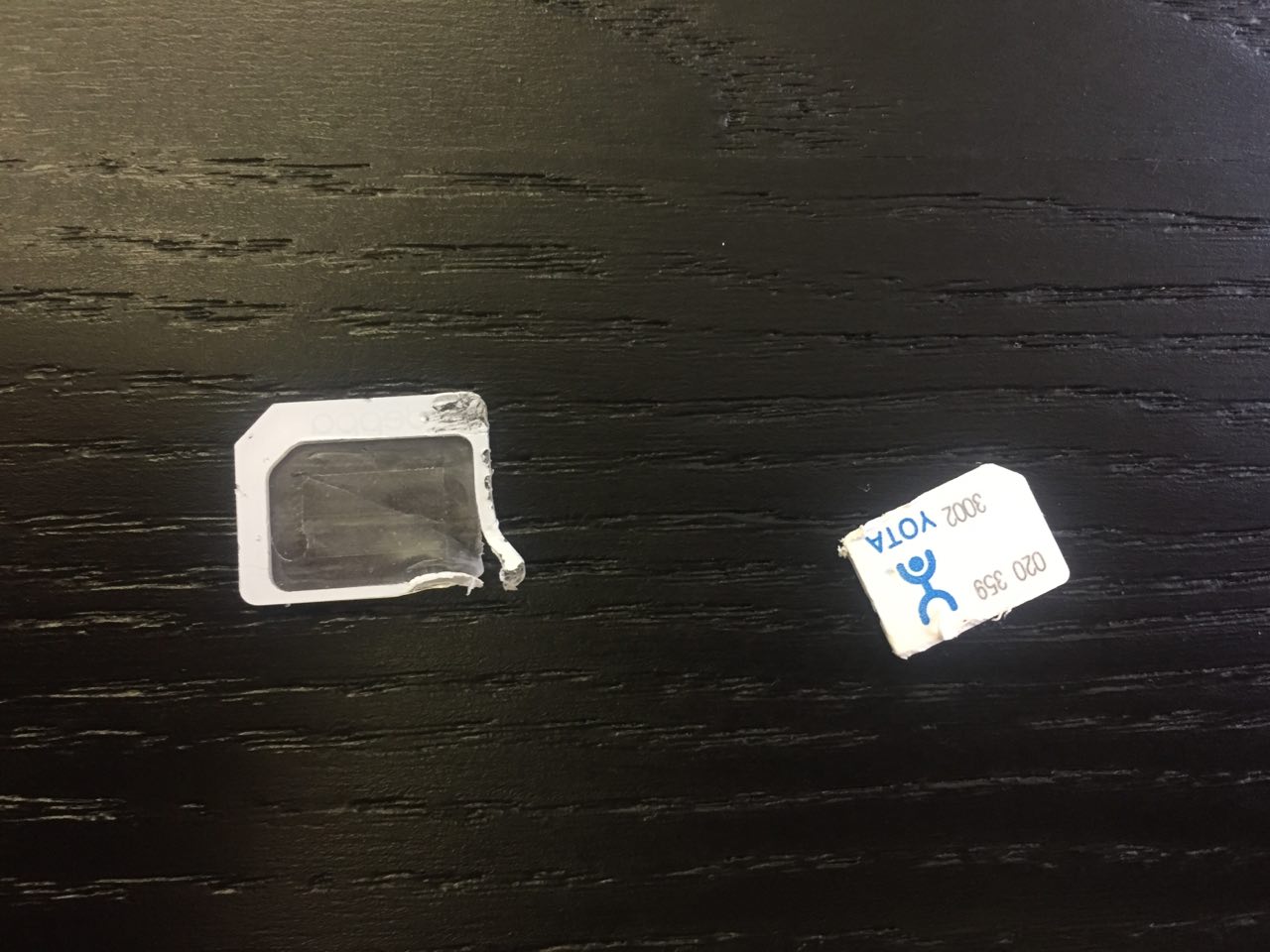
We decide to stop such experiments and go buy a SIM card in the Beeline showroom specifically for the Micro SIM format. The consultant offers the “Everything for 500” tariff, for 500 rubles a month - the cheapest for the tracker, in his own words. We did not check whether it was so or not, and went on to conduct tests further.
So, Simka is inserted into MonkeyG, download the application for iOS:
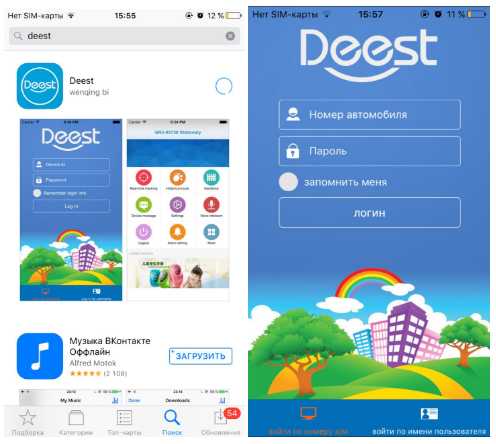
It looks scary, the translation is also "curve". And here - remember, we said that in vain we lost the instruction? So, only in the instructions specified device ID, which must be entered in the application.
On the case itself - is empty. It is impossible to get through to tech support. What to do? Nothing. The device is simply inoperable. We do not know how many people, like us, irresponsibly treat a piece of paper with instructions, but this will be a lesson to us.
Go to the test iPet Mini.
The SIM card slot is available on the back of the device, for this you need to bend the rubber cap:
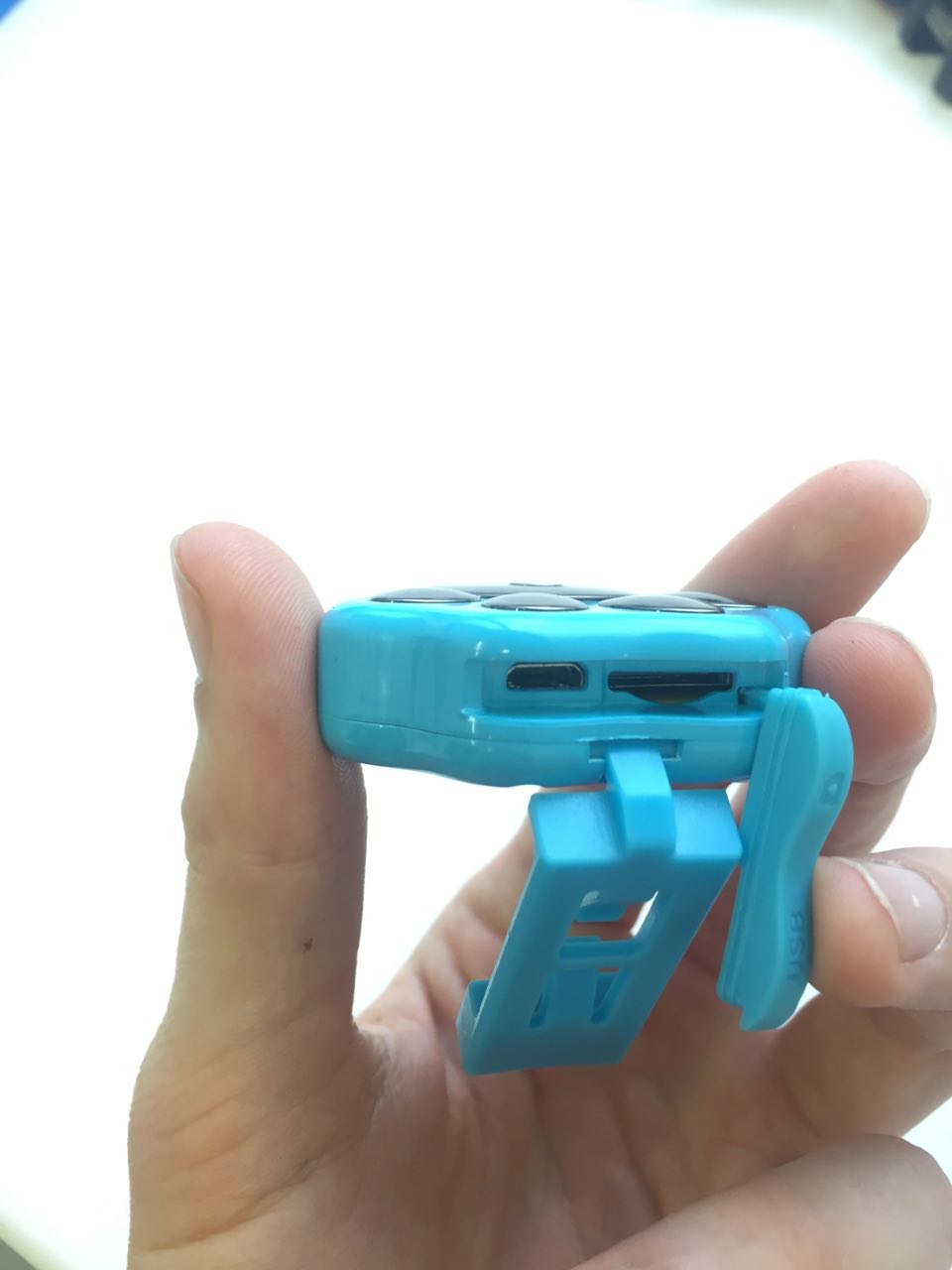
We insert the SIM, install the application. Chinese applications look about the same, and the translation is also equally bad for everyone:
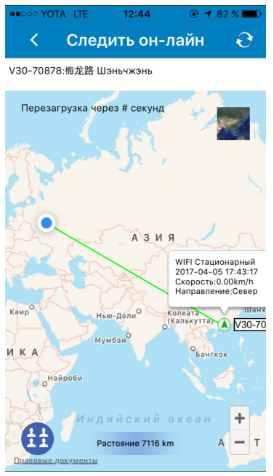
At the first launch, the device found itself in Shenzhen, but apparently he had not yet managed to catch the GPS, and the last location he had, undoubtedly, was in China.
We are waiting for a couple of minutes, and the coordinates come with an error of several hundred meters. Obviously, according to LBS (the blue dot is the location of the iPhone, the green arrow is the tracker).
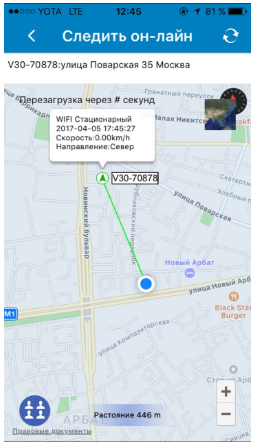
During the test, we were inside the building, so the lack of a GPS signal is quite normal. We go out, check:
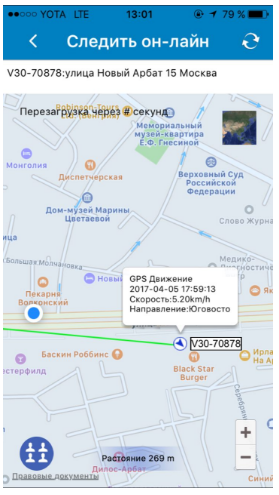
In fact, we were near the Baskin Robbins cafe, so the iPhone itself and the iPet Mini also sin. The error is within hundreds of meters. In general, this is not so bad, considering how unsuccessfully high-rise buildings are located on Moscow’s New Arbat in Moscow.
Mishiko as a whole works in these conditions in a similar way, but the results in field tests showed a little more precisely, we still remember this from the previous test:
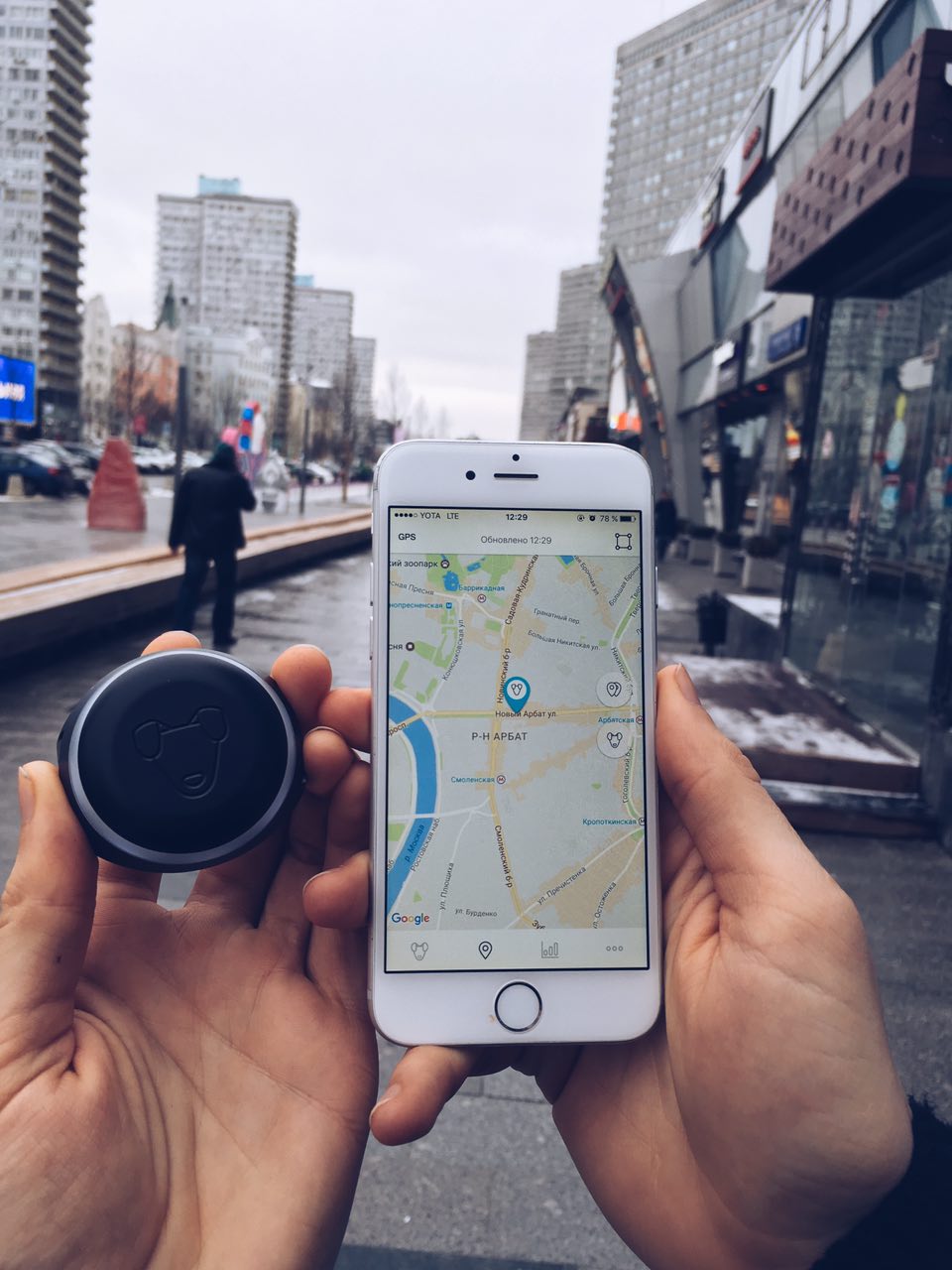
What can be concluded? The first is that if you are ready to torment with a poorly localized application and are not afraid of problems with a SIM card, and look for the tracker for a couple of months, then the Chinese brothers can offer quite a low-cost, short-term solution. For example, if you want to go with a dog to some distant fields for a week, and worry about the loss of a pet. You do not need to shell out for something expensive and it is easier to buy something that will cost as cheap as possible and last at least a week.
“On a long” purchase of Chinese trackers is no longer so justified: an overpayment for a connection can be 3-4 thousand. The plastic of the case is hlipkovat for dog teeth, the functionality is limited only to GPS (which you use only a couple of times), and the inconvenient sim-tray and zamorochki with a sim card - this is clearly not a plus for Chinese trackers.
What do you think and by what criteria do you choose (or would you choose) such a device?
- iPet Mini (3990 rubles)
- TK Star (4950 rubles)
- MonkeyG Deest (3528 rubles)
- X-Pet 1 (6900 rubles)
At each site, we used the "quick order" - indicated the mobile number, and waited for a call.

Order X-Pet 1 did not work at all: after placing the order, so no one called us back.
')
Shops with iPet and MonkeyG Deest called back almost immediately and offered to arrange delivery the next day.
On the site, where it was possible to buy TK Star, we were called back and informed that the model we chose “came all defective” and offered to choose something else or wait for a new delivery.
So there are only two of the four candidates left. We will test them. Go!
Unpacking
After the trackers arrived, we hurried to unpack them. So, meet: iPet Mini.

As you can see, the device itself is included in the kit, a clothes-pin and charging instructions in English and Chinese (no Russian).
Open MonkeyG Deest:

It looks somewhat simpler. Some kind of screwdrivers, screws in the bag (needed to unscrew the groove for the sim card), a clothespin, charging and tweezers for the SIM card. A nice bonus - the collar comes with it. There is no instruction in the photo (alas, we lost it while everything was unpacked and fotkali). Unfortunately, the loss of instructions we still bugs. About this we will tell a little later.
If we talk about Mishiko, here's what the user will find when buying a tracker:


The tracker itself, the collar, wireless charging, two instructions: brief and complete (on the first drawn dachshund) and an adapter for third-party collars.
Go to the launch and GPS tests.
We charge trackers
For charging and iPet, and MonkeyG Deest, such pegs are used for charging:



One of the four "teeth" in such a charge at MonkeyG immediately "stuck", but charging continued in this mode. When the clothespin is closed, the tracker still dangles in the groove, and it is easy to miss if it jumps off. It was necessary to check several times whether the clothespin was exactly on the right place, and whether the charging was going on.
We are here, of course, can not resist boasting their own exercises. After the walk, you can put Mishiko on it without even removing the device from the collar. Walked, removed Mishiko from the dog, and put on gymnastics:

Checking GPS
The first and most important thing in any GPS tracker is how it transmits data. Some devices use bluetooth, but in this case they can either create a p2p network (then you need to have a huge number of connected devices that would help find the location), or in principle are limited to a radius of several tens of meters. This scheme makes the presence of GPS is simply meaningless.
"Workers" GPS trackers use a cellular network to transmit, and here you need a SIM card. Mishiko uses a built-in SIM-chip, which works out of the box on a contract with T-Mobile (in Russia, MTS has become a roaming partner). In other cases, you will have to buy and activate the SIM, paying monthly payments to the operator. In the Mishiko tariff for 11900 rubles, it is not necessary to pay for cellular data in principle. That is, no ruble, and never.
In the case of the usual sim card and other trackers, you will have to pay at least 300-400 rubles per month, or at least 3-4 thousand per year. Plus, individual contracts of cellular operators and even operators in general, like Tele2 in Moscow (due to the lack of a 2G network), are not supported.
There are also pitfalls here: a sim card bought in the salon can voluntarily subscribe to some SMS horoscopes, and burn an extra 5-10 rubles every day. In the case of the SIM chip, this scenario is excluded.
So, enough lyrical digression, try to insert SIM cards in our trackers and test GPS.
First in line - MonkeyG Deest. The SIM card slot is hidden behind two small screws. To open the slot, you have to use the screwdriver that comes in the kit:

We decided to use the usual YOTA SIM card from iPhone 6, but it turned out that the device does not support nano-SIM, but only works with Micro SIM (as in iPhone 4).
We buy an adapter:

We insert our sim card into the adapter, we try to immerse it in the MonkeyG Deest slot ... And Simka is stuck. Due to the features of the adapter (and / or the tracker design), the SIM card “zazhevalo” in the slot and pull it out so simply will not work:

Five minutes of picking with a screwdriver and tweezers, and Simka, together with the adapter, surrendered. The adapter broke completely, and Simka got off with light scratches:

We decide to stop such experiments and go buy a SIM card in the Beeline showroom specifically for the Micro SIM format. The consultant offers the “Everything for 500” tariff, for 500 rubles a month - the cheapest for the tracker, in his own words. We did not check whether it was so or not, and went on to conduct tests further.
So, Simka is inserted into MonkeyG, download the application for iOS:

It looks scary, the translation is also "curve". And here - remember, we said that in vain we lost the instruction? So, only in the instructions specified device ID, which must be entered in the application.
On the case itself - is empty. It is impossible to get through to tech support. What to do? Nothing. The device is simply inoperable. We do not know how many people, like us, irresponsibly treat a piece of paper with instructions, but this will be a lesson to us.
Go to the test iPet Mini.
The SIM card slot is available on the back of the device, for this you need to bend the rubber cap:

We insert the SIM, install the application. Chinese applications look about the same, and the translation is also equally bad for everyone:

At the first launch, the device found itself in Shenzhen, but apparently he had not yet managed to catch the GPS, and the last location he had, undoubtedly, was in China.
We are waiting for a couple of minutes, and the coordinates come with an error of several hundred meters. Obviously, according to LBS (the blue dot is the location of the iPhone, the green arrow is the tracker).

During the test, we were inside the building, so the lack of a GPS signal is quite normal. We go out, check:

In fact, we were near the Baskin Robbins cafe, so the iPhone itself and the iPet Mini also sin. The error is within hundreds of meters. In general, this is not so bad, considering how unsuccessfully high-rise buildings are located on Moscow’s New Arbat in Moscow.
Mishiko as a whole works in these conditions in a similar way, but the results in field tests showed a little more precisely, we still remember this from the previous test:

What can be concluded? The first is that if you are ready to torment with a poorly localized application and are not afraid of problems with a SIM card, and look for the tracker for a couple of months, then the Chinese brothers can offer quite a low-cost, short-term solution. For example, if you want to go with a dog to some distant fields for a week, and worry about the loss of a pet. You do not need to shell out for something expensive and it is easier to buy something that will cost as cheap as possible and last at least a week.
“On a long” purchase of Chinese trackers is no longer so justified: an overpayment for a connection can be 3-4 thousand. The plastic of the case is hlipkovat for dog teeth, the functionality is limited only to GPS (which you use only a couple of times), and the inconvenient sim-tray and zamorochki with a sim card - this is clearly not a plus for Chinese trackers.
What do you think and by what criteria do you choose (or would you choose) such a device?
Source: https://habr.com/ru/post/402985/
All Articles